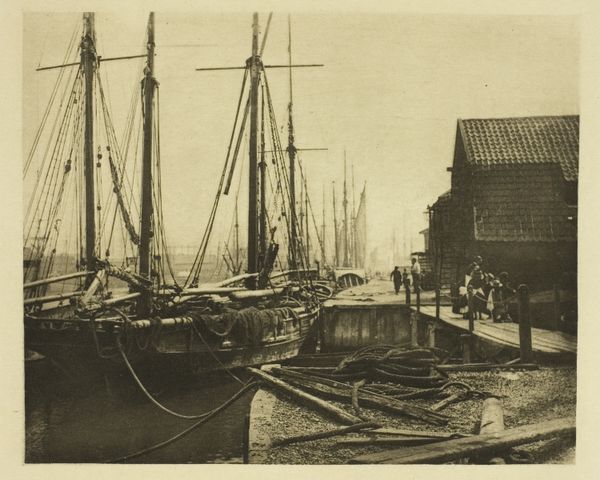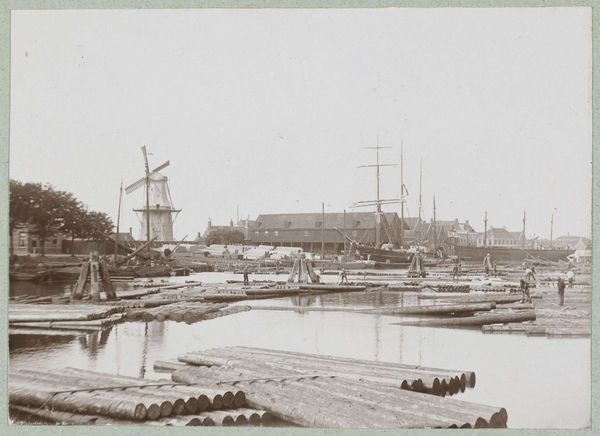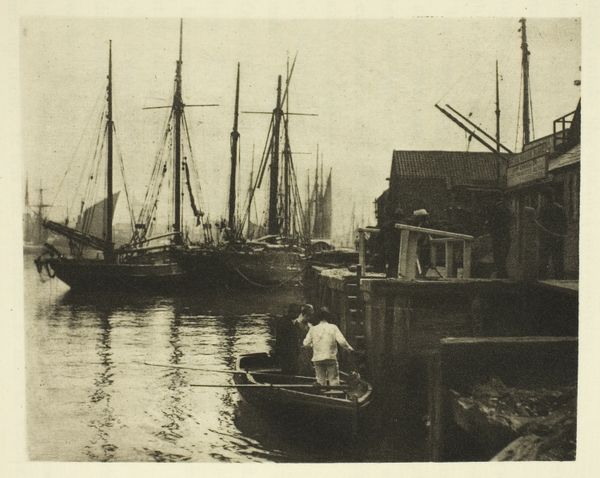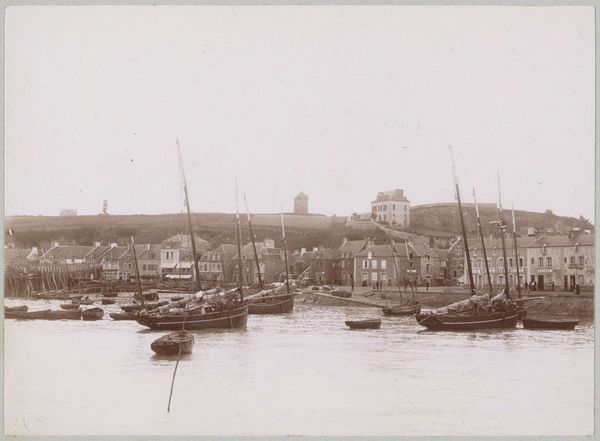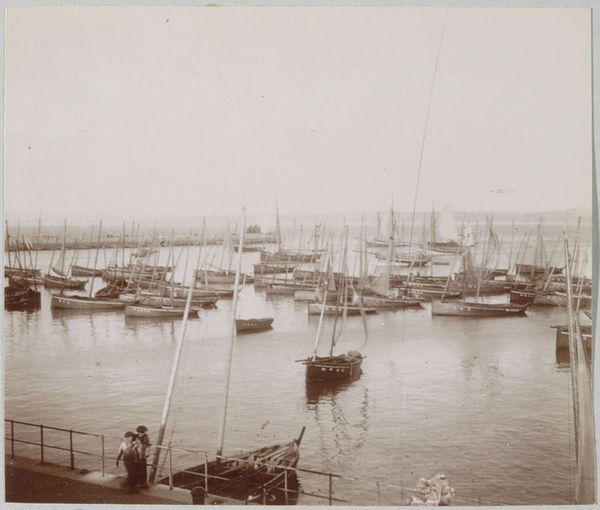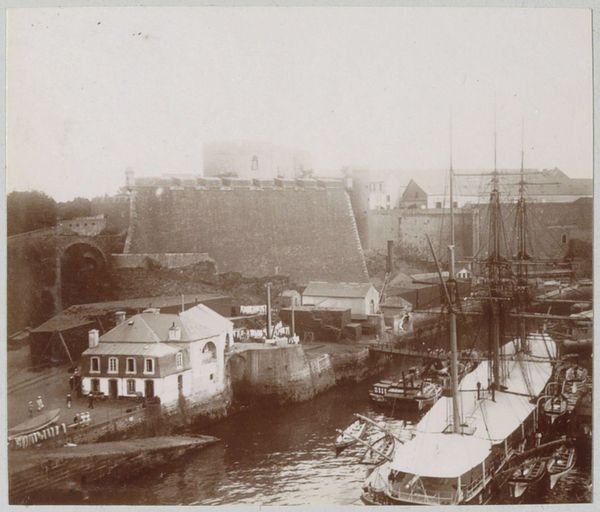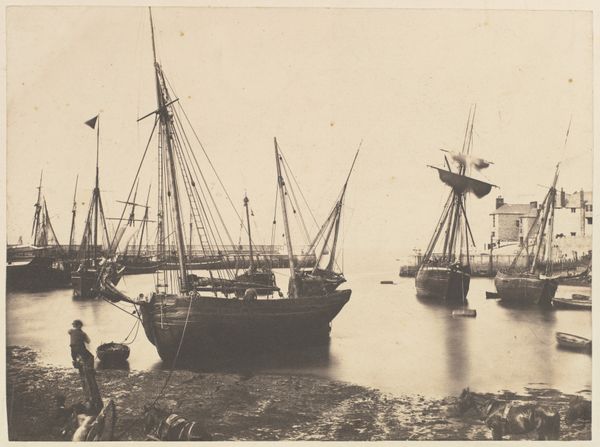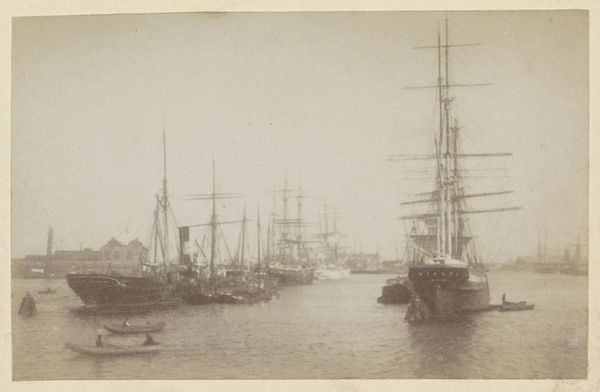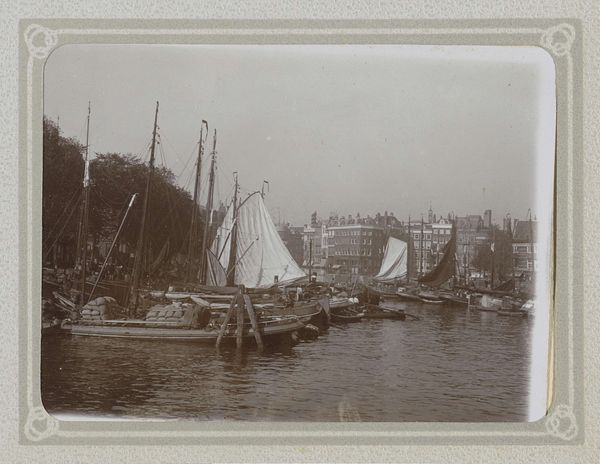
gelatin-silver-print, photography, gelatin-silver-print
#
gelatin-silver-print
#
landscape
#
photography
#
historical photography
#
gelatin-silver-print
#
19th century
#
united-states
#
realism
Dimensions: 4 5/8 x 6 5/8 in. (11.75 x 16.83 cm) (image)4 15/16 x 6 15/16 in. (12.54 x 17.62 cm) (sheet)
Copyright: No Copyright - United States
Curator: The gelatin-silver print before us is a landscape, believed to be captured by Lewis Hine in the 1920s. Though its title remains "Untitled," it evokes an era of profound change and is currently part of the Minneapolis Institute of Art. What strikes you immediately about it? Editor: A sense of quiet industry. A multitude of sailing masts fills the horizon—like slender spires, hinting at a whole world of work tied to the sea. But the grayscale mutes any dramatic interpretation. It feels like looking into a very specific past. Curator: Indeed. Consider the boat names we can glimpse--"Josephine F" for example, on a hull laden with nets. Hine was deeply interested in documenting human labor. Knowing his dedication, what symbolic weight might we ascribe to the choice of capturing work so close to nature and the water? Editor: The boat names remind me that Hine’s project went beyond simply recording work; they give us hints of individual lives and community. This image provides a glimpse into how port towns defined the identity of United States coastal communities. Curator: I agree. In the historical context of the early 20th century United States, industry was increasingly defined by mass production, urbanization, and labor movements, which frequently overlooked the significance of natural resource labor and local businesses. Hine appears to offer viewers the social commentary that nature still reigned supreme despite society's focus. Editor: It's true. I get the sense of the United States standing at the cusp of hyper-industrialization. Hine’s capturing the very possible decline of small sea towns may reflect our modern issues with balancing technological advancement and sustainability. Curator: Perhaps, even then, Hine sensed an undercurrent of an elegy. Even in its grayscale tones and quiet presentation, this "Untitled" piece has strong cultural continuity to modern issues we are facing in current society. The imagery of countless ships laden with nature, yet reliant on technological assistance. Editor: Definitely, thank you for the thoughtful symbolic interpretation; seeing it in context certainly brings an introspective look at current coastal issues of economy versus environment. Curator: My pleasure. Considering our chat today, Hine's perspective offers not just a portrait, but a complex tableau that links industry, community, and ecology to both a historic and present experience.
Comments
minneapolisinstituteofart about 2 years ago
⋮
Lewis Hine was a documentary photographer, educator, and social reformer. Trained in sociology, Hine taught at the progressive Ethical Culture School in New York City before turning his attention to photography. As a photographer for the National Child Labor Committee (NCLC), Hine traveled the United States to document children in unsafe working conditions in factories, mines, fields, and city streets. Over ten years, he created an indelible record of the human cost of an exploitative labor market, documenting the tired faces of children at the end of their shifts, or even children mutilated by industrial machinery. These disturbing photographs were used in publications and presentations created by Hine and the NCLC, and ultimately promoted sweeping policy changes designed to protect children.
Join the conversation
Join millions of artists and users on Artera today and experience the ultimate creative platform.
